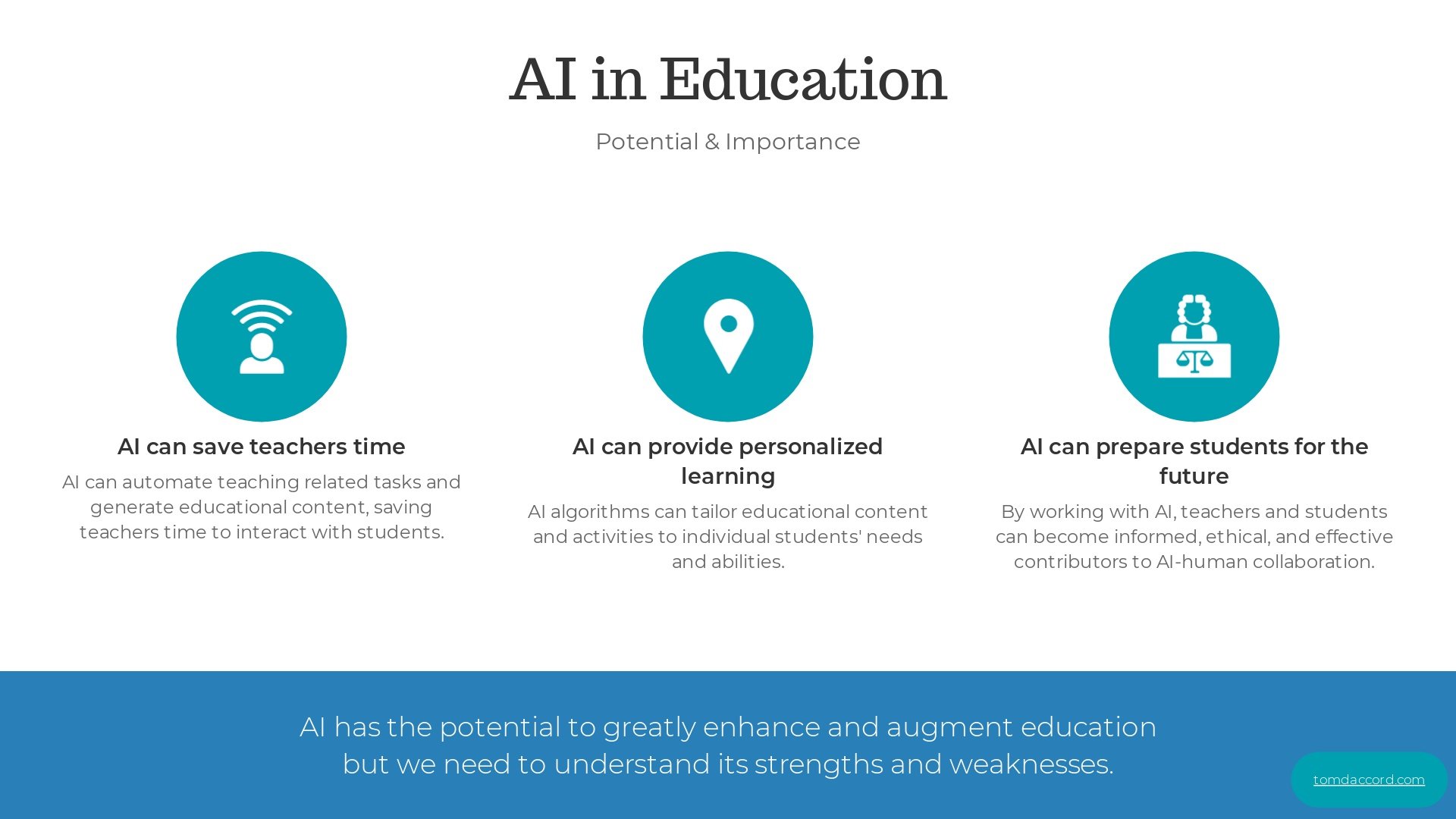
Why Use Artificial Intelligence?
Artificial intelligence (AI) stands out as one of the most transformative technologies of the 21st century — and perhaps ever. It permeates almost every sector, from healthcare to finance, and education is no exception. For educators and school administrators, understanding and integrating AI into the classroom is not just a trend but a necessity.
AI’s Growing Significance in Society
The first and foremost reason for incorporating AI in education is the undeniable prominence of AI in our daily lives. From smart home devices that adjust our living conditions to recommendation algorithms on our favorite streaming platforms, AI is everywhere. Furthermore, the job market and professional environments that today's students are entering are vastly different from those of even a decade ago. Many professions now require a basic understanding of AI concepts, and some jobs that exist today might be automated in the future. Many experts predict that this integration will only deepen, with AI becoming an even more integral part of societal functions. As educators, it's imperative to recognize this shift and prepare students for a world where AI is ubiquitous.
The Multifaceted Benefits of AI in Education
For students, AI-powered tools can provide personalized learning experiences, adapting content to individual needs and pacing. This personalization ensures that every student gets the attention and resources they require, bridging knowledge gaps more effectively.
AI-powered tools and platforms can present students with complex, real-world scenarios, challenging them to devise innovative solutions. By interacting with these AI-driven challenges, students are encouraged to analyze multiple facets of a problem, and use their distinctly human capacities to approach solutions in a systematic yet creative manner.
For teachers, AI can handle administrative tasks, analyze student performance data, and even offer insights into optimizing teaching methods. This not only reduces the workload but also allows educators to focus on what they do best: teaching and mentoring.
Moreover, teachers can harness the capabilities of AI to design innovative teaching activities. These AI-enhanced methods can transform traditional classroom dynamics, offering students a more interactive and immersive learning experience. By integrating AI tools, educators can cater to diverse learning styles, making lessons more engaging and adaptable. Whether it's facilitating group discussions, generating thought-provoking questions, or assisting in project-based learning, AI stands as a versatile tool that can elevate the teaching process, blending pedagogical principles with modern technology.
Students need to understand AI (and teachers, too)
While AI offers numerous advantages, it's not without its challenges. Ethical considerations, potential biases in algorithms, and the responsible use of AI are all topics of concern. Teachers have a unique opportunity to explore these issues alongside their students. By doing so, they can foster a deeper understanding of AI's strengths and weaknesses, ensuring that the next generation uses this technology responsibly and ethically. In all, students who have the opportunity to work with AI technology, and understand how to leverage it responsibly, are much better positioned to thrive in our tech-driven society than those who have been denied access to it.
In conclusion, the integration of AI into teaching and learning is not just beneficial—it's essential. As the world leans more into AI-driven solutions, educators have the responsibility to ensure students are not only consumers of this technology but also informed and ethical contributors to its future development. Embracing AI in the classroom is a step towards a brighter, more informed future for all.
Tom Daccord



